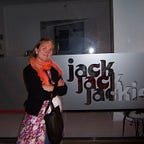Chives, Fire and Food: The Story of Washington’s Herbfarm
The words “farm to table” are so commonplace on menus right now you can even find them at quick-serve counter spots all across the country. However, as the Tampa Bay article “Farm to Fable” recently exposed, not everything listed on a menu is actually sourced from local, artisanal producers.
Don’t be completely discouraged, as there are restaurants doing it right — and doing it long before the words “locavore” were ever in common parlance.
One such restaurant is The Herbfarm, located just outside Seattle in the bucolic, rolling hills of Woodinville, Washington. Owned by Ron Zimmerman and Carrie Van Dyck, the restaurant doesn’t need to fake the origin story of their ingredients. In fact, much of the food eaten at the restaurant comes from its own five acre farm, located less than two miles away.
“The way it all started was Ron’s parents had a nursery in Fall City in the ‘70s,” begins Chris Weber. He’s been at the restaurant since 2007, and named head chef in 2011 when he was just 25.
“The way the nursery started was his mom Lola had been growing a bunch of stuff on her land and one day she put out a wheelbarrow full of extra chive plants out front of the house for sale. They sold and the nursery grew from there,” he says.
This was in 1974 and from that first wheelbarrow full of chives, Lola and her husband Bill’s nursery grew and grew, becoming a place where people stopped to seek out herbs and vegetables. In 1986 Ron and his wife Carrie joined the nursery, known as the Herbfarm. They decided to remodel the garage and host an educational luncheon.
On May 25, 1986 the Herbfarm restaurant served its first six-course lunch, laying the groundwork for what the restaurant evolved into.
From that first lunch forward, the restaurant steadily gained steam with James Beard award-winning chef Jerry Traunfeld at the helm until tragedy struck in 1997 when a fire burned the restaurant to the ground. Rebuilding took years. First, dinners were held in tents on the site and when it looked like it would be impossible to rebuild, they moved to temporary quarters in a winery in Woodinville, 20 miles from Fall City.
The new Herbfarm, styled to look like a quaint country cottage, was completed and open for business once again on May 25, 2001, the 15th Anniversary of its first meal.
With a fire, a four year gap in regular service and a 20 mile move, it would be easy for The Herbfarm to lose its farm component, but Weber says there was always the desire and need for the restaurant to be tied to a farm.
Of course, as chefs have cycled through the restaurant, their relationship with the five acre parcel of land has changed.
According to Weber, Jerry Traunfeld (head chef from 1990–2007) was all about quality. “Do less and do it better. Everything was absolutely perfect that came in from the farm,” he says.
After Traunfeld left, Keith Luce took over for a few years.
“Keith brought a vision of what the farm could be, which I really appreciate too and I could argue that it wouldn’t be what it is now and we wouldn’t be going in that direction if it wasn’t for him,” Weber says.
Luce’s contribution included adding chickens to the farmstead, which over the years has grown to include pigs and the occasional quail or duck.
And Weber’s take for what has transpired under his watchful gaze?
“What happened basically is we went from high quality to much lower quality but a larger offering of things and now we’re trying to refine that and get back to where we can still maintain growing so many crops.”
No one ever said farming was easy, but a restaurant with a farm component throws an extra wrench in the works.
As much as Weber would like to be spending time working on the farm, budgets and time don’t really allow for it.
“One thing I’ve learned is there are no quick jobs. In the kitchen, 15 minutes is a ton of time, you can get a lot done in 15 minutes a half hour or even 45 minutes. You might be able to get one thing done on in an hour on the farm; it’s amazing how long everything takes.”
Additionally, you can’t control the weather and when you’ve budgeted to have 95 to 100 percent of the produce coming from the farm during summer months, you have to take what you can get.
Not only does the farm have a new farmer managing the property this year, they tried to save some money by repurposing saved seeds — some of which failed to propagate. They also took a year off from raising pigs, meaning they’ll be relying more heavily on outside producers.
Lastly, as Weber notes, “It’s been the shittiest growing season I’ve ever seen here. It’s not been warm, it’s not been sunny. And it’s been cloudy and still not really rainy either — we’re in a drought and it’s been cold. It just doesn’t make any sense.”
But if anything, Weber is incredibly creative and he’s taking the challenge of using what’s getting delivered in stride.
“If the tomatoes aren’t ripening, it becomes how do we use green tomatoes. If everything’s bolting because it’s stressed, how do we use it in it’s bolted form — do we use the flowers, the roots? We’re planting more lettuce and trying to find things that will like this weather.”
People are still flocking to the restaurant for dinner — served in one seating six nights a week, the theme of which changes often — and Weber’s still incredibly proud of what he puts out on plates.
